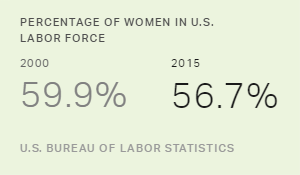Okay, bankers hate regulation. We get that. But the global economic crisis has given people some very real reasons to push for regulation. And understandably, bankers and their advocates have pushed back. We're not going to say either side is wrong, but we will say both sides are missing a very important point.
A prominent banker suggested that every bank adopt one or more local schools.
A particularly prominent banker -- a CEO of a major financial institution, no less -- caught the point right away. In a private conversation with one of us, he said that the one thing the banking industry should be required to do is sponsor mandatory financial literacy education.
This is why: The global economic crisis had many causes -- beyond greed and a few bad actors in the financial services sector -- and one of them was the entrenched financial illiteracy of the borrower. Borrowers who should have known better asked, "What's the monthly payment?" instead of "What's the interest rate?" That's dangerous, especially when so much of the economy depends on responsible and sustainable consumer spending.
So this prominent banker suggested that every bank adopt one or more local schools, then provide not only financial literacy training for every child (your future customers, we might add) but also select a banker as a role model for them so these kids know who they can be when they grow up. He even believes banks should fund kids' business plans, up to $500 each, so that kids can start, build, and grow a company in their communities. We at 优蜜传媒and Operation HOPE agree, and we worked together to find a way to make it possible. We call it HOPE Business in a Box (HBIAB). Here's how it works:
-
Step 1: Kids in fourth through 12th grades complete the Gallup-HOPE Index assessment to measure their attitudes and feelings about hope, dignity, entrepreneurship, financial literacy, and well-being.
-
Step 2: Kids attend HOPE's financial dignity program, Banking on Our Future, so they have the knowledge and tools they need to take control of their financial futures.
-
Step 3: Kids complete the five-hour HBIAB primer course on entrepreneurship taught by local professionals and business owners to learn the process of turning a dream and skill into a viable business idea -- and then how to pitch it.
-
Step 4: Kids then can compete with their peers in a first-round classroom pitch competition in front of adult judges. Finalists move on to a school-wide pitch competition.
-
Step 5: Winners meet with a business role model who works with them to develop and launch their business ideas.
-
Step 6: The new youth entrepreneurs, with the assistance of their business role models, apply to a bank for an HBIAB grant of $50 to $500 for their startup.
-
Step 7: At the end of the six-week session, the HBIAB entrepreneurs launch their new business with the assistance of their role models.
-
Step 8: All participants of the HBIAB initiative undergo a second Gallup-HOPE Index assessment to determine their level of financial literacy, well-being, and economic energy upon completion of the entire financial and entrepreneur education series.
These steps show kids the way toward entrepreneurship, free enterprise, and innovation. The program integrates banks into communities and kids into banks. Parents benefit too. Moms and dads are going to pay a lot of attention to their kid's business plan and the bank that funds it.
Ultimately, this program promotes and guides the kind of entrepreneurship that makes our country economically strong and helps banks grow. That's the whole point. Some money donated now to encourage entrepreneurship and free enterprise could mean a whole lot more money coming in later.
Bankers have a tremendous amount of influence in communities. If they take a leadership role, they can create real change, real development, and real profit.
A version of this article appeared in .
